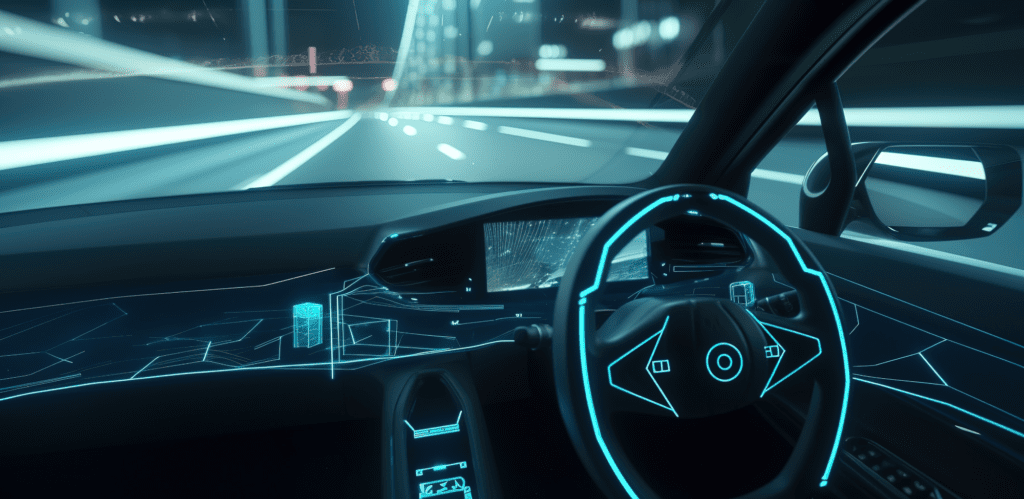
The notion of vehicles cruising our highways with no hands on the steering wheel once seemed like a page taken straight out of a science fiction novel.
Today, however, driverless cars are not only possible but are edging closer to becoming a mainstream reality. These autonomous vehicles, equipped with cutting-edge technology, promise to redefine our roadways, enhance safety, and revolutionize our concepts of personal and public transportation.
Let’s embark on a journey through the evolution of driverless cars, exploring the key technologies that power them, the major players in the industry, and understanding exactly how these futuristic vehicles work.
The Dawn of the Driverless Car
The journey towards autonomous vehicles has been long and filled with both technological breakthroughs and setbacks.
The concept of driverless cars dates back to the 1920s, but it wasn’t until the late 20th century that we saw the first serious attempts to bring this vision to life.
The 1980s and 1990s witnessed several landmark experiments, such as Mercedes-Benz and Ernst Dickmanns’ reprogrammed luxury sedans, which successfully navigated thousands of kilometres on European roads without human intervention.
In the early 2000s, the DARPA Grand Challenge pushed the boundaries further by inviting teams to compete in a desert race with autonomous vehicles.
This competition spurred innovation and attracted the attention of researchers and entrepreneurs worldwide.
Today, we have vehicles capable of navigating complex urban environments, a testament to the rapid advancement of this technology.
Key Technologies Powering Driverless Cars
Driverless cars are a symphony of advanced technologies working in perfect harmony. At the heart of these marvels are LIDAR (Light Detection and Ranging), radar, cameras, and GPS systems.
LIDAR provides detailed 3D maps of the car’s surroundings, radar offers invaluable data on the distance and speed of objects around the vehicle, and cameras contribute nuanced visual information.
Integrating all this data, GPS systems then help in pinpointing the vehicle’s exact location on the map.
This integration is crucial for creating an autonomous vehicle that can safely navigate without any human input.
The Major Players in the Autonomous Vehicle Industry
Several key companies and start-ups are driving the autonomous vehicle industry forward.
Waymo, a subsidiary of Alphabet (Google’s parent company), is often seen as the front-runner in this race, having conducted extensive testing of their driverless cars on public roads.
Tesla is another significant player, with its AutoPilot feature offering advanced semi-autonomous capabilities in consumer cars. Meanwhile, companies like Uber are exploring autonomous vehicles to reduce the cost and increase the safety of ridesharing services.
Each of these companies brings a unique approach to the development and implementation of driverless technology, contributing to the field’s overall growth.
Understanding How Driverless Cars Work
Sensors and Machine Learning: The Eyes and Brain of the Car
The sensors on a driverless car collect vast amounts of data about the vehicle’s surroundings, including other vehicles, pedestrians, road signs, and more.
This data is then processed by machine learning algorithms, which act as the car’s brain, making sense of the information and learning from it to make informed driving decisions.
This continuous learning process is what allows autonomous vehicles to adapt and navigate through complex environments.
Navigation and Decision-Making Processes
Autonomous vehicles use a combination of detailed maps, sensor data, and algorithms to plan routes and make real-time decisions.
They can assess the best paths, navigate through traffic, and adjust their course based on real-time conditions and obstacles.
This capacity to process and react to live data makes them incredibly efficient at navigating complex traffic situations.
Safety Features and Fail-Safes
One of the most critical aspects of driverless cars is their safety features. These vehicles are designed to detect potential hazards and respond appropriately, often faster than a human driver could.
This includes applying brakes automatically, changing lanes to avoid obstacles, and even coming to a complete stop if necessary.
Moreover, despite the high level of automation, there is still a role for human oversight in monitoring the vehicle’s systems and taking control if needed.
As we stand on the brink of this new era in transportation, it’s clear that driverless cars hold the promise of a safer, more efficient, and more accessible future.
However, as with any major technological shift, there are challenges to overcome, including regulatory hurdles and public acceptance.
Yet, the progress made thus far suggests that driverless cars will indeed play a significant role in shaping our future mobility.
The Impact on Society and Urban Life
The arrival of driverless cars is poised to have a profound impact on society and the way we think about urban living.
From potentially slashing the number of traffic accidents to reshaping our cities, the implications are vast and varied.
However, alongside the excitement, there are also significant ethical and privacy concerns that need to be addressed.
Potential Reduction in Traffic Accidents
One of the most compelling arguments for the adoption of autonomous vehicles is their potential to drastically reduce the number of traffic accidents.
Studies have consistently shown that human error is responsible for the majority of road accidents. With driverless cars, many of these errors could be eliminated.

These vehicles are designed to obey traffic laws to the letter, can react faster than humans to avoid potential collisions, and are not subject to distractions or impairments.
While the technology is not perfect and accidents have occurred during testing phases, the data suggests that widespread adoption of autonomous vehicles could lead to a significant decrease in accidents, potentially saving thousands of lives annually.
The Future of Urban Planning and Infrastructure
The impact of autonomous vehicles on urban planning and infrastructure could be transformative. With driverless cars, we could see a reduction in the need for parking spaces, as these vehicles could drop passengers off and either head to outlying areas to park or continue on to pick up other passengers.
This could free up vast amounts of urban space for parks, housing, or commercial development. Traffic flow could also be improved, as autonomous vehicles can communicate with each other to avoid congestion and optimize routes.
Furthermore, the adoption of driverless cars could lead to new models of transportation, such as increased car-sharing and a reduction in private car ownership, fundamentally changing the urban landscape.
Ethical and Privacy Concerns
However, the rise of driverless cars also brings a host of ethical dilemmas and privacy concerns. In situations where an accident is unavoidable, how should an autonomous vehicle decide whom to protect?
This raises complex ethical questions about the value of lives and the decisions programmed into these vehicles by their creators.
Additionally, the reliance on extensive data collection and surveillance capabilities in driverless cars raises significant privacy concerns.
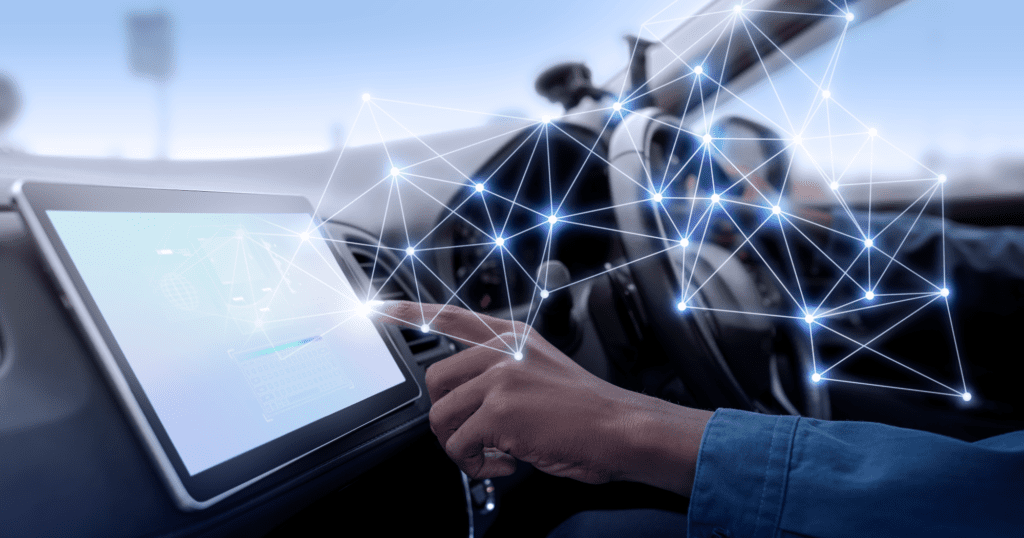
The data collected about individuals’ movements and habits could be misused if not properly safeguarded, leading to unprecedented levels of surveillance and potential invasions of privacy.
As we navigate these challenges, it’s clear that the transition to a world where driverless cars are common will not be straightforward.
It will require careful consideration of the legal, ethical, and social implications, as well as robust safeguards to protect privacy and data.
However, the potential benefits of autonomous vehicles, from reduced accidents and congestion to more liveable cities, make it a journey worth pursuing.
The road ahead may be complex, but driverless cars have the potential to steer us towards a safer, more efficient, and more environmentally friendly future.
Legal and Regulatory Landscape
The legal and regulatory landscape for autonomous vehicles is as dynamic as the technology itself. As countries around the globe grapple with the advent of driverless cars, a patchwork of laws and regulations is emerging, reflecting varied approaches to this ground-breaking shift in transportation.
Let’s delve into the current laws, the evolving nature of insurance and liability, and how different nations are navigating these uncharted waters.
Current Laws Governing Autonomous Vehicles
The legal framework for autonomous vehicles varies significantly across different countries and regions, largely due to the nascent state of the technology and its application.
Read the Automated Vehicles Bill 2023 from the UK Government
In many areas, existing laws did not anticipate the possibility of vehicles operating without human drivers, leading to a scramble to update regulations.
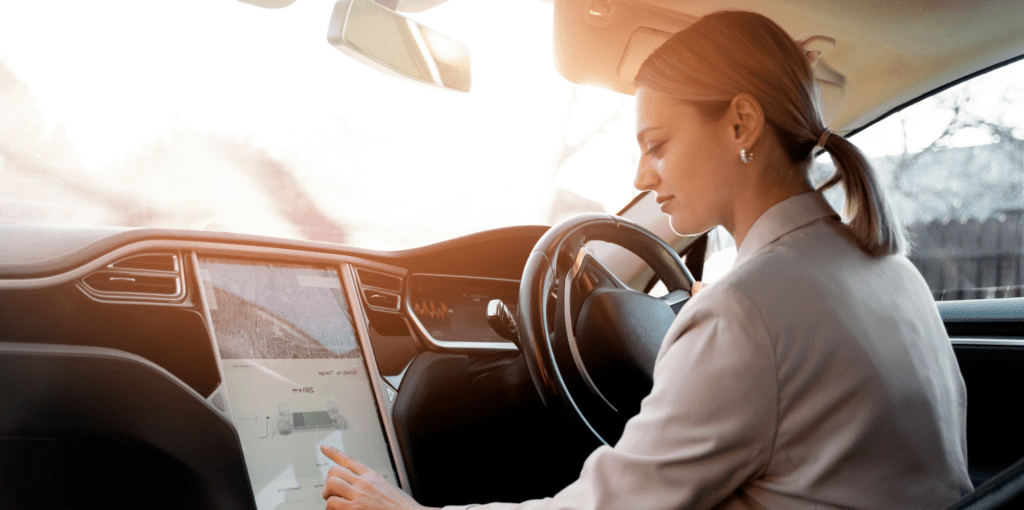
For instance, some jurisdictions have begun to define different levels of vehicle autonomy and set specific requirements for testing and deployment.
However, the pace at which laws are evolving often struggles to match the rapid advancement of autonomous driving technologies, creating a complex legal environment for manufacturers and developers.
Insurance and Liability in the Age of Driverless Cars
The advent of driverless cars also poses unique challenges to traditional models of insurance and liability.
Traditionally, liability for accidents has largely fallen on drivers, but with the driver taken out of the equation, determining liability becomes more complex.
There is ongoing debate over whether the responsibility should shift to the manufacturers of the autonomous vehicles or the developers of the software that powers them.

Moreover, insurance companies are exploring new models that take into account the reduced risk of accidents in autonomous vehicles, potentially leading to lower premiums for operators of these vehicles.
The industry is at a crossroads, with much still to be decided about how insurance and liability models will adapt.
International Perspectives on Regulation
Different countries have adopted varied approaches to regulating autonomous vehicles, reflecting their unique legal, social, and technological landscapes.
- In the United States, the approach has been somewhat fragmented, with federal and state governments both playing roles in regulation, leading to a mosaic of laws that can vary significantly from one state to another.
- Germany, known for its automotive industry, has been proactive in updating road traffic laws to accommodate autonomous vehicles, allowing for their testing and setting the stage for future deployment.
- China, aiming to be a leader in the autonomous vehicle market, has implemented ambitious plans to test and deploy driverless cars, supported by strong government backing and strategic regulations.
This includes designated areas for testing and the development of a national framework for vehicle-to-vehicle and vehicle-to-infrastructure communication.
Each of these approaches reflects the balancing act that governments face in fostering innovation while ensuring public safety and addressing legal and ethical concerns.
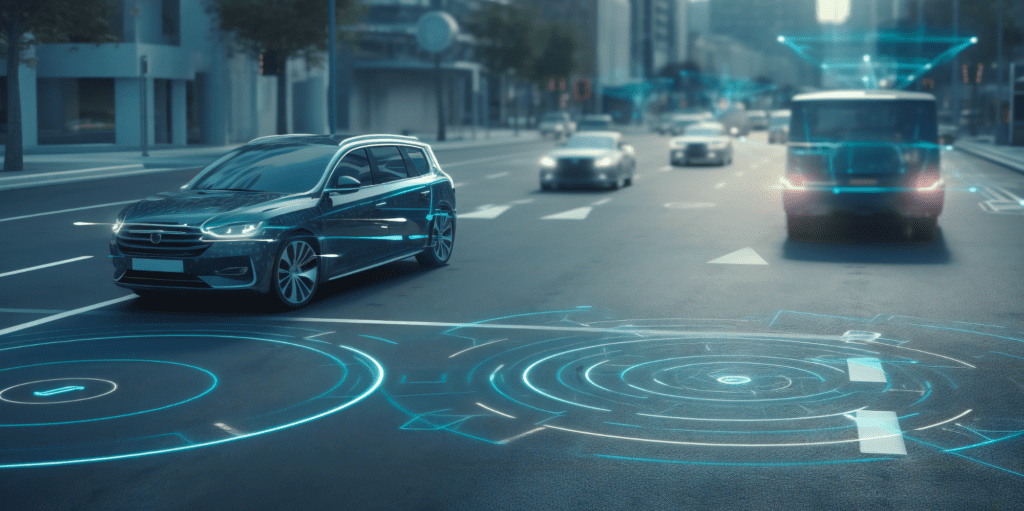
As the technology continues to evolve, so too will the legal and regulatory frameworks that govern it, requiring ongoing dialogue among policymakers, industry leaders, and the public to navigate the future of autonomous driving.
The legal and regulatory landscape for autonomous vehicles is as dynamic as the technology itself.
As countries around the globe grapple with the advent of driverless cars, a patchwork of laws and regulations is emerging, reflecting varied approaches to this ground-breaking shift in transportation.
Let’s delve into the current laws, the evolving nature of insurance and liability, and how different nations are navigating these uncharted waters.
The Road Ahead: Challenges and Opportunities
As we venture further into the age of autonomous vehicles, the road ahead is lined with both challenges and opportunities.
From technical and ethical hurdles to the profound impacts on public transportation, the environment, and the workforce, the shift towards driverless cars is poised to reshape our world in fundamental ways.
Overcoming Technical and Ethical Hurdles
The path to fully autonomous driving is fraught with technical challenges, including improving sensor accuracy, enhancing machine learning algorithms, and ensuring robust performance under diverse and unpredictable environmental conditions.

Equally important are the ethical questions that arise, particularly regarding decision-making in critical situations and the privacy concerns related to data collection.
Addressing these issues requires a concerted effort from manufacturers, policymakers, and ethicists to establish frameworks that protect individual rights and public safety.
The Role of Driverless Cars in Public Transportation
Autonomous technology has the potential to revolutionize public transport, making it more efficient, accessible, and flexible.
Driverless buses and shuttles could offer on-demand services, reducing wait times and eliminating the need for fixed schedules and routes.
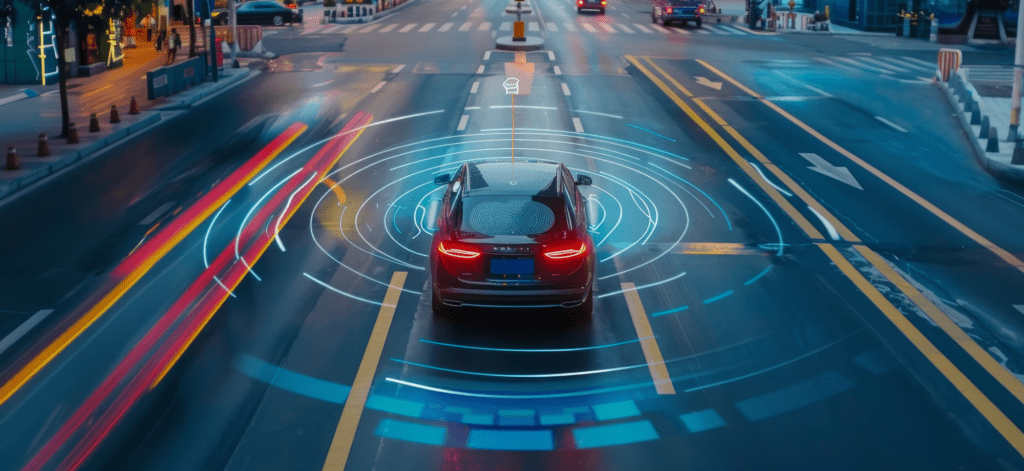
This could dramatically improve transport options for people in less densely populated areas and provide a viable alternative to private car ownership, with significant implications for urban planning and congestion.
Environmental Impacts and Sustainability
Driverless cars offer promising environmental benefits, including reductions in emissions and traffic congestion.
Optimised routing and smoother driving patterns can lead to more efficient fuel use, while the potential for electric autonomous vehicles could further decrease the carbon footprint of personal transport.

Moreover, the shift towards shared mobility and public transport solutions could significantly reduce the number of vehicles on the road, contributing to a more sustainable and environmentally friendly transport ecosystem.
Preparing for a Driverless Future
For consumers, adapting to a future with autonomous vehicles means staying informed about technological advances and revaluating traditional notions of car ownership.
Embracing car-sharing and ride-hailing services can provide a glimpse into a future where access to mobility solutions is prioritised over owning a vehicle.
Additionally, consumers should advocate for policies and regulations that ensure the safe and ethical deployment of autonomous vehicles.
The Impact on the Workforce and Economy
The rise of autonomous vehicles will inevitably affect jobs in transportation, from trucking and taxi services to logistics and delivery.
While some jobs may become obsolete, new opportunities will emerge in fields related to autonomous vehicle technology, maintenance, and fleet management.
The economy will need to adjust to these shifts, potentially through retraining programs and the development of new industries related to autonomous transport.
Educational and Skill Requirements for Future Generations
The era of autonomous vehicles will require future generations to possess a unique set of skills and education.
Beyond traditional engineering and data analysis, there will be a growing need for expertise in machine learning, cybersecurity, and ethical design.
Additionally, vocational training may evolve to prepare workers for new roles in vehicle maintenance, software development, and traffic management systems.
Conclusion
As we navigate the complexities of integrating autonomous vehicles into our daily lives, the focus must remain on harnessing their potential while addressing the challenges head-on.
By fostering innovation, prioritising safety and ethics, and preparing for the socioeconomic shifts ahead, we can steer towards a future where driverless cars not only transform our roads but also lead us towards a more sustainable, efficient, and inclusive world.
Frequently asked questions
An autonomous vehicle, also known as a driverless car or self-driving car, is a vehicle equipped with technology that allows it to navigate and operate without human input. These vehicles use a combination of sensors, cameras, radar, and artificial intelligence to drive themselves.
Driverless cars use a variety of technologies to perceive their surroundings, including LIDAR (Light Detection and Ranging), radar, cameras, and ultrasonic sensors.
These technologies provide a 360-degree view of the vehicle’s environment, allowing it to detect other vehicles, pedestrians, obstacles, and road signage.
While autonomous vehicles promise to reduce the number of traffic accidents caused by human error, their safety is still under evaluation.
They are designed to obey traffic laws and react quickly to avoid accidents. However, as the technology continues to develop, the safety of these vehicles will depend on extensive testing and refinement.
Currently, autonomous vehicles can struggle in extreme weather conditions, such as heavy snow or rain, which can interfere with the sensors’ ability to detect the vehicle’s surroundings.
Improvements in sensor technology and data processing are being made to overcome these limitations.
Some semi-autonomous features are already available in vehicles on the market today. However, fully autonomous vehicles that can operate in all conditions without any human intervention are still in the testing and development phase.
Widespread availability is expected to unfold gradually over the next decade.
Rather than replacing public transportation, autonomous vehicles are expected to complement and enhance it.
Driverless technology could lead to more efficient and accessible public transport options, such as on-demand shuttles and buses that integrate seamlessly with other modes of transport.
Autonomous vehicles are likely to transform jobs in the transportation sector, with some roles becoming obsolete while new ones are created.
The demand for drivers may decrease, but there will be increased need for specialists in autonomous vehicle technology, maintenance, and fleet management.
In the future, it will be possible to own a driverless car. However, as the technology progresses and becomes more integrated into society, there may be a shift towards shared mobility and services rather than individual ownership.
Autonomous vehicles use advanced algorithms and machine learning to process the data collected from their sensors and cameras.
This information allows them to make real-time decisions about navigation, speed, and avoiding obstacles, simulating the decision-making process of a human driver.
One of the primary ethical concerns is how these vehicles will make decisions in unavoidable accident scenarios—how they will weigh the safety of passengers versus pedestrians.
Additionally, there are concerns about privacy and data security, as these vehicles will collect and process vast amounts of data about their environments and passengers.


